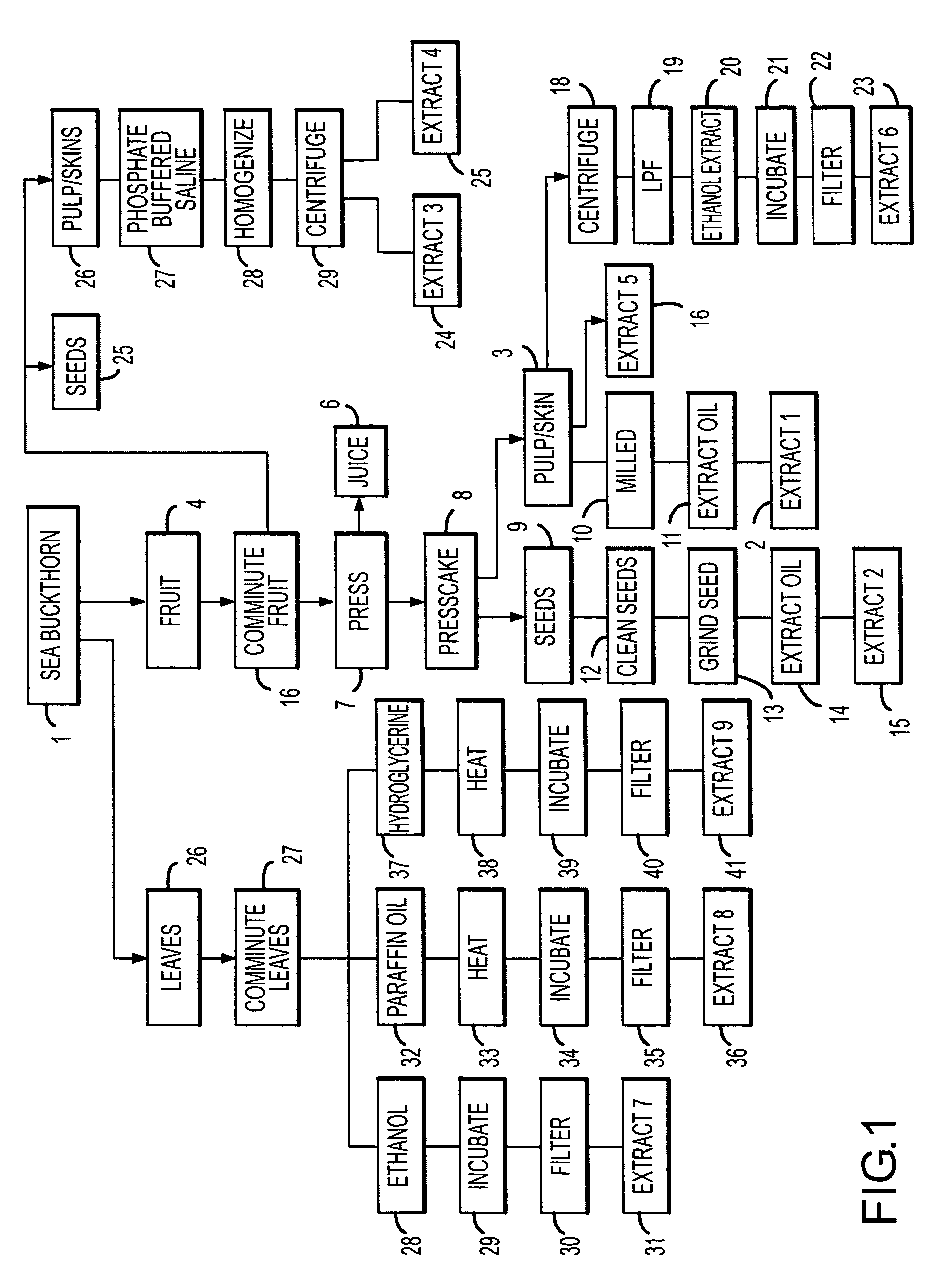Reproductive cell system
a reproductive cell and system technology, applied in the field of reproductive cell system, can solve the problems of inability to carry out the application, so as to reduce the loss of reproductive cell function, reduce the loss of reproductive cell characteristics, and reduce the loss of in vivo reproductive cell characteristics
- Summary
- Abstract
- Description
- Claims
- Application Information
AI Technical Summary
Benefits of technology
Problems solved by technology
Method used
Image
Examples
example 1
[0050]In a first experiment (data set out to the right of Exp 1 in Tables 1-6), semen was collected from two stallions via artificial vagina. The motility of each ejaculate was determined subjectively via light microscope and the semen was diluted to a final concentration of about 5×108 motile sperm cells / ml with E-Z freezin LE (Animal Reproduction Systems, Chino, Calif.) and combined to one each of thirteen 0.25 mL semen samples was an amount of a corresponding one of thirteen adjuvants: (1) no addition-control (“untreated control semen sample); 2) about 5% cyclodextrin; 3) about 2.5% cyclodextrin; 4) about 5% pulp oil in cyclodextrin; 5) about 2.5% pulp oil in cyclodextrin; 6) about 5% seed oil in cyclodextrin; 7) about 2.5% seed oil in cyclodextrin; 8) emulsion of about 5% seed oil, 9) emulsion of about 2.5% seed oil, 10) emulsion of about 5% pulp oil, 11) emulsion of about 2.5% pulp oil, 12) about 5% juice, and 13) about 2.5% juice. Throughout this description the amount of extr...
example 2
[0054]In a second experiment (data set out to the right of Exp 2 in Tables 5-6), semen was collected from one stallion via artificial vagina. The motility of the ejaculate was determined objectively using a Hamilton-Thorn sperm analyzer with a 37° C. stage warmer. The assessed data included percentage of motile sperm cells, progressive motile sperm cells, as well as average path velocity, straight line velocity, and straigtness of motile sperm cells in accordance with conventional operating procedures for the instrument. The semen was diluted to a final concentration of about 5×108 motile cells / ml with E-Z Mixin CST (Animal Reproduction Systems, Chino, Calif.) and to each of fifteen aliquots of 0.25 mL one each of fifteen adjuvants was combined: (1) no addition-control, 2) about 5% cyclodextrin control, 3) about 2.5% cyclodextrin, 4) about 5% pulp oil in cyclodextrin, 5) ab about 2.5% pulp oil in cyclodextrin, 6) about 5% seed oil in cyclodextrin, 7) about 2.5% seed oil in cyclodext...
example 3
[0058]In a third experiment (data set out to the right of Exp 3 in Tables 1-6) Semen was collected from one stallion via artificial vagina. The motility of the ejaculate was determined subjectively via light microscope prior to cooling. The semen was diluted to a final concentration of about 6×108 motile cells / ml with E-Z Freezin LE (Animal Reproduction Systems, Chino, Calif.) containing about 20% egg yolk and about 0.1% orvus paste plus and each of seven 0.25 mL aliquots was combined with a corresponding one each of adjuvant as follows: (1) no addition-control, 2) emulsion of about 5% seed oil, 3) emulsion of about 2.5% seed oil, 4) emulsion of about 5% pulp oil, 5) emulsion of about 2.5% pulp oil, 6) about 5% juice, and 7) about 2.5% juice.
[0059]Following dilution of each semen sample with E-Z Freezin LE plus the corresponding adjuvant (treated semen samples), the treated semen samples were cooled by reducing the temperature at a controlled rate to about 4° C. Motility was evaluat...
PUM
 Login to View More
Login to View More Abstract
Description
Claims
Application Information
 Login to View More
Login to View More - R&D
- Intellectual Property
- Life Sciences
- Materials
- Tech Scout
- Unparalleled Data Quality
- Higher Quality Content
- 60% Fewer Hallucinations
Browse by: Latest US Patents, China's latest patents, Technical Efficacy Thesaurus, Application Domain, Technology Topic, Popular Technical Reports.
© 2025 PatSnap. All rights reserved.Legal|Privacy policy|Modern Slavery Act Transparency Statement|Sitemap|About US| Contact US: help@patsnap.com


